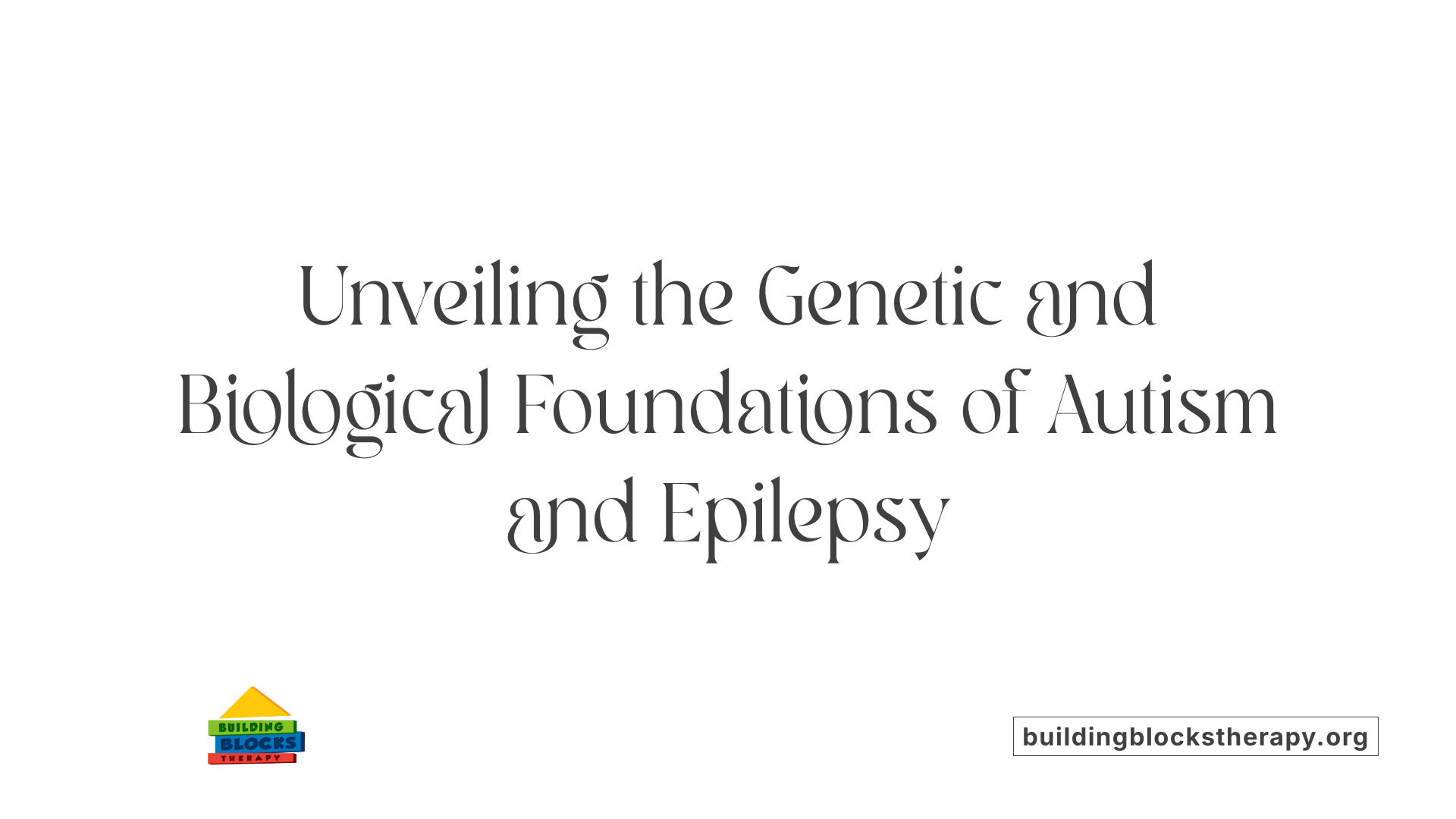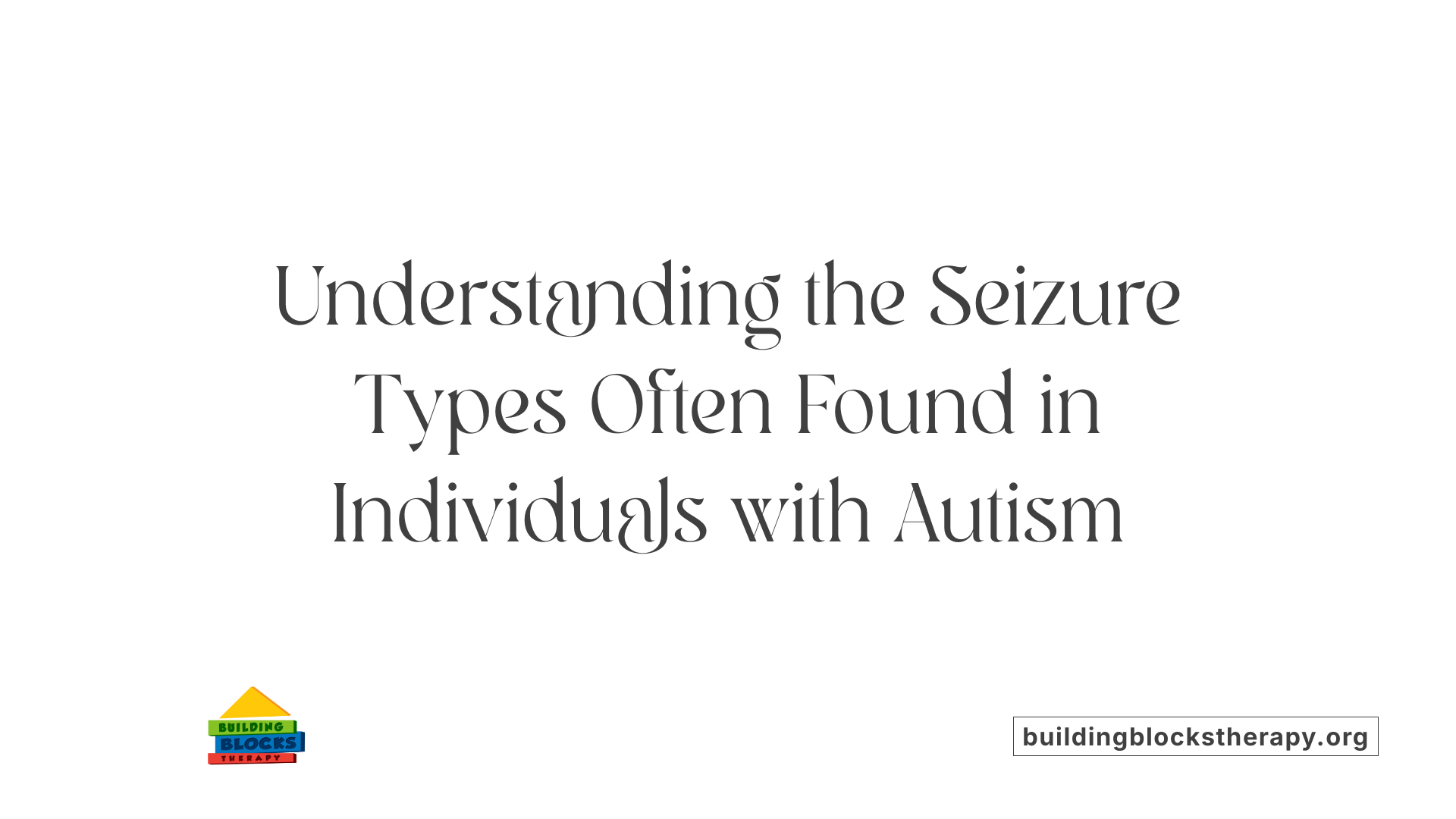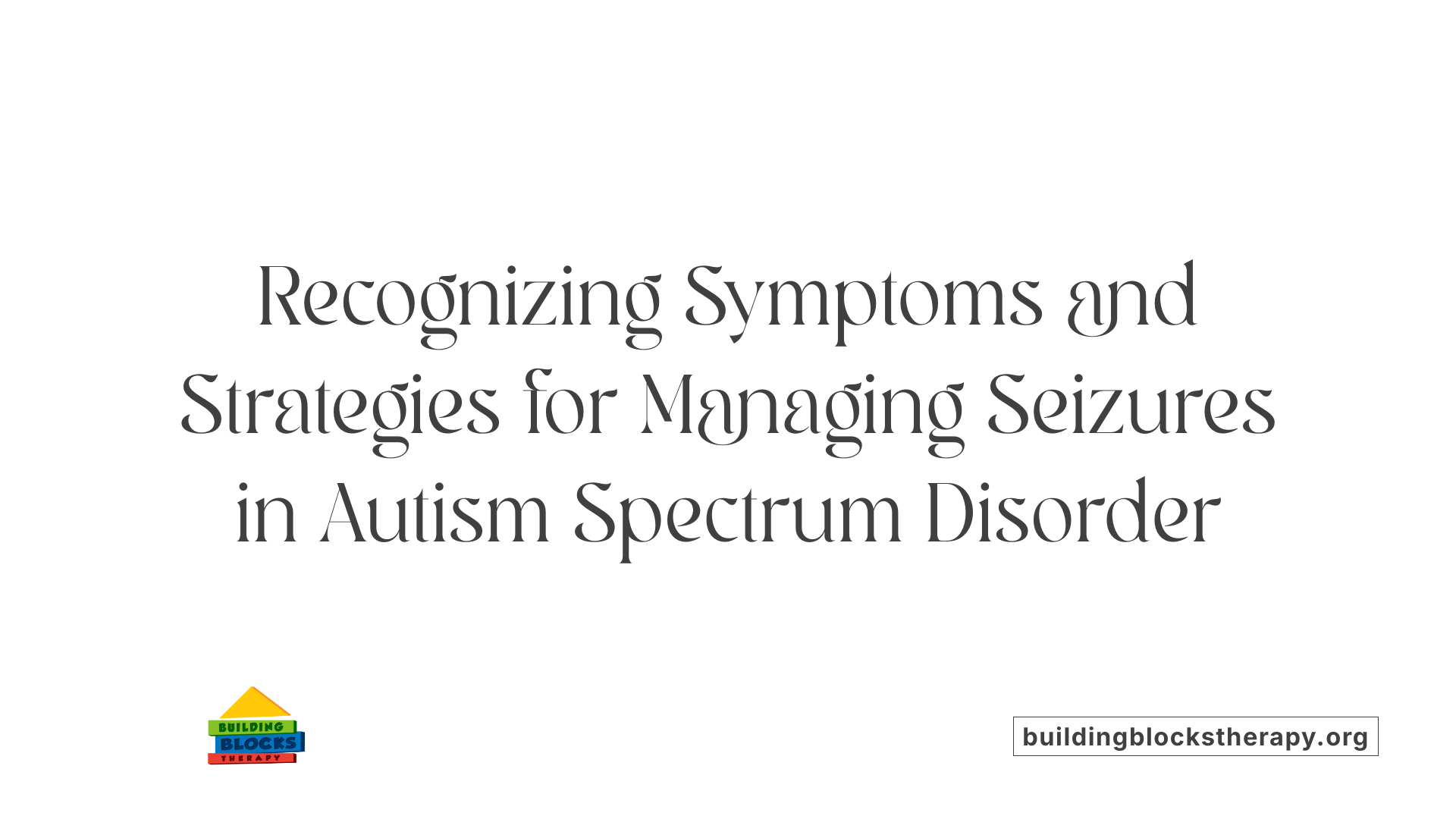Autism and Seizures/Epilepsy
Unraveling the Complex Relationship Between Autism and Epilepsy

Understanding the Co-Occurrence of Autism Spectrum Disorder and Seizures
Autism spectrum disorder (ASD) and epilepsy are two neurodevelopmental conditions that frequently coexist, forming a complex clinical picture that impacts individuals across the lifespan. Research indicates that approximately one-third of autistic individuals also experience seizures, and individuals with epilepsy are more likely to meet criteria for autism. This significant overlap suggests shared underlying mechanisms involving genetic, molecular, and neurodevelopmental factors. Recognizing the relationship between autism and seizures is vital for timely diagnosis, effective management, and improved quality of life. This article explores the biological links, clinical features, diagnostic challenges, and emerging treatments related to the co-occurrence of autism and epilepsy.
Genetic and Biological Underpinnings of Autism and Epilepsy

What causes the link between autism and seizures?
The association between autism and seizures is rooted in shared biological mechanisms that influence brain development and function. Genetic mutations and syndromes play a significant role in predisposing individuals to both conditions. For example, mutations in genes like FMR1, which is involved in Fragile X syndrome, and TSC1/2, related to Tuberous Sclerosis, have been linked to a high prevalence of autism alongside epilepsy. These genetic alterations often disrupt normal neural growth, synaptic connectivity, and cellular signaling pathways.
In addition to specific gene mutations, certain genetic syndromes are commonly associated with both autism and epilepsy. Rett syndrome, Fragile X syndrome, and Phelan-McDermid syndrome are notable examples where co-occurrence is frequent. These conditions often involve abnormalities at the cellular and molecular levels that impact neural circuits.
Structural abnormalities in the brain also contribute to this link. Cortical tubers, disorganized neural layers, and abnormal connectivity patterns create hyperexcitable brain regions, increasing seizure susceptibility. These abnormalities can alter neural circuitry and disrupt the balance between excitation and inhibition, crucial for normal brain function.
Neurotransmitter imbalances further underpin this connection. An excess of excitatory neurotransmitters like glutamate and a deficit in inhibitory neurotransmitters such as GABA lead to increased neural excitability. This imbalance not only promotes seizures but also affects neural development processes implicated in autism.
Both autism and epilepsy involve pathways that influence synaptic plasticity—the brain's ability to strengthen or weaken synaptic connections in response to activity. Dysregulation of these pathways can lead to abnormal neurodevelopment and network activity, contributing to the coexistence of the two conditions. The mTOR signaling pathway, for instance, is hyperactivated in conditions like Tuberous Sclerosis, affecting cell growth, migration, and synaptic functions, thereby influencing both autistic behaviors and seizure activity.
In summary, the link between autism and seizures arises from complex interactions among genetic mutations, structural brain abnormalities, neurotransmitter imbalances, and disrupted signaling pathways. These elements collectively create an environment of increased neural excitability and impaired connectivity, underpinning the common coexistence of autism spectrum disorder and epilepsy.
Further Research: A helpful search topic for exploring this subject is "shared genetic mechanisms linking autism and epilepsy," which can provide more in-depth insights into the molecular and genetic overlaps.
Summary Table:
| Mechanism | Examples | Impact | Explanation |
|---|---|---|---|
| Genetic mutations | FMR1, TSC1/2, SCN2A | Increased risk | Disrupt normal brain development and circuitry |
| Genetic syndromes | Rett’s, Fragile X, Tuberous sclerosis | Co-occurrence | Specific syndromes with shared features |
| Brain structure | Cortical tubers, dysconnectivity | Seizure predisposition | Abnormal brain regions and pathways |
| Neurotransmitter imbalance | GABA, Glutamate | Hyperexcitability | Affects neural firing stability |
| Synaptic pathways | mGluR5, mTOR | Developmental disruptions | Impacts plasticity and connectivity |
Understanding these interconnected biological factors helps clarify why autism and epilepsy often occur together and guides targeted research and treatment approaches.
Types of Seizures Commonly Associated with Autism Spectrum Disorder

What are the types of seizures commonly associated with autism spectrum disorder?
Children with autism spectrum disorder (ASD) experience a variety of seizure types, reflecting the complex nature of how neural activity can become dysregulated. The most frequently observed seizures in individuals with ASD include generalized seizures, such as tonic-clonic and absence seizures.
Generalized tonic-clonic seizures, also known as grand mal seizures, involve widespread electrical activity throughout the brain, leading to muscle stiffening, jerking movements, loss of consciousness, and postictal confusion. Absence seizures, often seen in children, involve brief episodes of staring and loss of awareness, which can be mistaken for daydreaming or inattentiveness.
Focal, or partial, seizures originate in one area of the brain and can present with a range of symptoms depending on the location. For instance, some children may experience focal impaired awareness seizures, formerly called complex partial seizures, characterized by staring episodes, automatisms, or confused behavior.
In addition to these, febrile seizures occur in young children during febrile illnesses and are more common among children with ASD. These seizures are generally short and benign but indicate a heightened susceptibility to seizure activity.
Other seizure types reported in the context of autism include myoclonic seizures, characterized by sudden jerks of a muscle or group of muscles; atonic seizures, involving sudden loss of muscle tone leading to falls; and tonic seizures, involving sustained muscle stiffening.
Certain seizure syndromes, particularly Lennox-Gastaut syndrome and Landau-Kleffner syndrome, are closely linked to ASD due to their severe impact on cognition and behavior. These syndromes show multiple seizure types and often resist conventional treatments.
Diagnosing these seizure types involves clinical observation complemented by electroencephalograms (EEGs), which help identify abnormal electrical activity in the brain. The EEG patterns may vary depending on the seizure type, aiding in targeted treatment approaches.
Treatment strategies typically include anticonvulsant medications tailored to the specific seizure type, with some cases also benefiting from advanced interventions like epilepsy surgery or dietary therapies. Recognizing the specific seizures a child experiences is essential to optimize treatment and improve quality of life.
Challenges in Diagnosing Seizures in Autistic Individuals

How are seizures diagnosed in individuals with autism, and what challenges are involved?
Diagnosing seizures in autistic individuals requires a careful, multi-faceted approach. The typical process involves extended electroencephalogram (EEG) monitoring, detailed medical history collection, and careful observation of behaviors.
One of the main challenges in diagnosis stems from the overlap of behavioral symptoms. Many autistic behaviors—such as staring episodes, repetitive movements, and stereotypies—can resemble seizure activity. For example, staring spells or stiffening may be mistaken for absence seizures or focal seizures, especially when communication barriers prevent the individual from describing sensations.
Furthermore, some seizures are subclinical, meaning they do not produce obvious outward symptoms but still show irregular electrical activity on EEG. About 80% of children with autism display abnormal EEG patterns, indicating electrical dysregulation that may not always coincide with observable behaviors.
Behavioral mimics add another layer of complexity. For instance, episodes of intense focus or sensory overload can mimic seizure-like symptoms, such as rhythmic twitching or temporary loss of attention. These overlaps make it difficult to differentiate between autism-related behaviors and genuine seizure episodes.
The role of neuroimaging—such as MRI—and genetic testing is also vital in complex cases, especially when seizures are intractable, or there are other developmental concerns. These tests can help identify underlying structural or genetic causes, like tuberous sclerosis or Fragile X syndrome, which are closely associated with both ASD and epilepsy.
Because seizures can occur at any age, with a higher prevalence in children over age nine and adolescents, ongoing vigilance is essential. Early detection and accurate diagnosis allow for better management, reducing the risk of neurological deterioration and improving quality of life.
In summary, diagnosing seizures in autistic children is often complicated by overlapping behaviors, communication difficulties, and variable seizure presentations. It requires a multidisciplinary team—including neurologists, neuropsychologists, and specialists in genetics—to ensure a comprehensive evaluation. This collaborative approach helps distinguish true epileptic episodes from autism behaviors and supports tailored treatment plans.
Shared Genetic Factors and Neurodevelopmental Pathways

Are there genetic or biological factors that link autism and epilepsy?
Research indicates that autism spectrum disorder (ASD) and epilepsy share several genetic and biological underpinnings. Many genetic mutations and syndromes associated with one condition are also linked to the other, suggesting a common biological basis.
Several genes involved in neural signaling and synaptic function have been implicated. For example, mutations in SCN1A, a gene encoding a sodium channel, are associated with both epilepsy and autism, particularly in syndromes like Dravet syndrome. Similarly, alterations in FMR1—the gene linked to Fragile X syndrome—affect synaptic development and excitability, increasing the risk of seizures alongside cognitive and social impairments characteristic of autism.
Further, mutations in MECP2, responsible for Rett syndrome, influence gene transcription and neuronal plasticity, contributing to both epileptic activity and autistic features. These mutations disturb the delicate balance of excitation and inhibition within neural circuits, leading to abnormal brain activity.
Role of synaptic dysfunction and neural excitability
At the cellular level, both autism and epilepsy are increasingly understood to involve synaptic dysfunction. Abnormalities in the regulation of synaptic growth, receptor function, and neuronal connectivity can cause an imbalance of excitatory and inhibitory signals. This imbalance leads to heightened neural excitability, which manifests as seizures, and disrupts typical neurodevelopment, affecting social skills and communication.
Animal models provide valuable insights into these mechanisms. For instance, mice with mutations in FMR1 show enhanced synaptic depression and increased seizure susceptibility due to overactivation of metabotropic glutamate receptors (mGluR5). These models illustrate how genetic alterations can lead to both epileptic activity and autistic-like behaviors.
Involvement of pathways such as mTOR and mGluR5
The mTOR signaling pathway is a central regulator of cell growth and synaptic plasticity. Dysregulation of mTOR has been observed in conditions like tuberous sclerosis complex (TSC), a genetic disorder characterized by benign brain tumors and high rates of epilepsy and autism. Excessive mTOR activity results in abnormal cell proliferation and disrupted neural circuitry, contributing to both seizure development and autistic features.
Similarly, the mGluR5 receptor, which modulates synaptic transmission and plasticity, is overactive in Fragile X syndrome, leading to increased neuronal excitability and impaired synaptic maturation. Targeting these pathways pharmacologically has shown promise in reducing both seizure activity and autistic phenotypes in animal models.
Genetic syndromes linking ASD and epilepsy
Certain genetic syndromes offer clear examples of the connection between these disorders. Tuberous sclerosis (TSC), caused by mutations in TSC1 or TSC2, involves abnormal mTOR pathway regulation, leading to neurological manifestations including epilepsy (often early in life) and autism. Similarly, Rett syndrome results from MECP2 mutations, with many affected individuals experiencing seizures and autistic features.
Fragile X syndrome, due to FMR1 gene mutations, is the most common inherited cause of intellectual disability and a significant genetic link to ASD. About 15-30% of males with Fragile X also have autism, and seizures occur in a subset of these individuals.
Evidence from animal models
Animal studies reinforce the genetic findings, demonstrating how specific gene mutations cause neural circuit abnormalities. Mice models with FMR1 mutations recapitulate some behavioral and neurological features of Fragile X syndrome and show increased seizure susceptibility. Similarly, mice with TSC gene mutations exhibit cortical tubers and seizure-like activity.
These models underscore the convergence of genetic, cellular, and molecular pathways in the development of both autism and epilepsy. They also serve as tools for testing targeted therapies that may alleviate symptoms associated with both conditions.
| Genetic Factors | Syndromes | Pathways Involved | Evidence from Models |
|---|---|---|---|
| SCN1A, SCN2A | Dravet syndrome, ASD | Ion channels, excitation-inhibition balance | Mouse models show seizure susceptibility and behavioral features |
| FMR1 | Fragile X | Synaptic plasticity, mGluR5 receptor | Increased seizure risk; autistic behaviors in models |
| MECP2 | Rett syndrome | Gene transcription regulation, neural plasticity | Seizures common; behavioral autism features |
| TSC1, TSC2 | Tuberous sclerosis | mTOR pathway | Cortical tubers, intractable epilepsy, social deficits |
In summary, the overlapping genetic mutations and disrupted biological pathways highlight the interconnected nature of autism and epilepsy. Understanding these links offers potential paths for developing targeted treatments that address both conditions simultaneously.
Clinical Features and Management Strategies

What are the common symptoms and clinical features of seizures in autistic individuals?
Seizures in autistic individuals can manifest through a wide range of symptoms, which often overlap with behaviors characteristic of autism or other medical conditions. Common signs include involuntary muscle stiffening or jerking movements, episodes of staring or unresponsiveness, confusion, and sometimes a sudden loss of consciousness. Unusual sensations, such as tingling or numbness, may also occur.
Seizure types vary and include generalized tonic-clonic seizures — characterized by stiffening and jerking movements — as well as focal seizures, which involve localized involuntary movements or sensations. Subtle signs can include lip smacking, head nodding, or frantic eye movements, making detection more complex.
Many episodes of seizure activity are brief and may be mistaken for behavioral or sensory episodes typical of autism, such as meltdowns or repetitive behaviors. Up to 80% of children with ASD demonstrate abnormal electrical activity in EEG recordings, although not all have visible seizure episodes.
Because of this overlap, careful observation and medical evaluation are crucial. EEG testing often aids in diagnosis, especially when episodes are mild or ambiguous. Recognizing these symptoms early allows for timely intervention, which can improve developmental outcomes and reduce risks associated with seizure disorder.
Impact of seizures on development and behavior
Seizures can significantly affect cognitive, emotional, and behavioral development in autistic children. Frequent or severe seizures may lead to regression of previously acquired skills, increased behavioral challenges, or difficulties in learning.
Seizures that occur during critical periods of brain development can interfere with neural circuits responsible for language, social skills, and motor functions. Additionally, the unpredictability and discomfort of seizures can cause anxiety and behavioral disturbances.
For many autistic individuals, the coexistence of seizures complicates treatment plans and requires a coordinated approach to care.
Treatment options including AEDs, diet, and surgery
Managing epilepsy in autism involves various strategies tailored to the individual's needs. Anti-epileptic drugs (AEDs) remain the primary treatment, with many medications effectively reducing or controlling seizures. However, some individuals may experience behavioral side effects from AEDs, requiring careful medication management.
Dietary therapies such as the ketogenic diet can be beneficial, especially in cases where medications are ineffective or cause adverse effects. For severe or intractable cases, epilepsy surgery, including resection of focal brain regions responsible for seizures, has shown promising results in some children, with reports of seizure reduction or elimination and improvements in cognition and social behavior.
Other interventions, like vagal nerve stimulation, may also be considered for refractory cases. The effectiveness of these treatments varies, underscoring the importance of personalized management.
Multidisciplinary care approaches
Effective management requires a team of specialists, including neurologists, developmental pediatricians, neuropsychologists, and therapists. This collaborative approach ensures comprehensive assessment, including EEG, MRI, and genetic testing when appropriate.
Treatment plans are individualized, addressing not only seizure control but also developmental goals and behavioral management. Regular follow-up and adjustments help optimize outcomes.
Transitions from pediatric to adult care are vital, ensuring ongoing support and monitoring throughout lifespan.
Support for families and communication tools
Supporting families involves education about seizure recognition and first aid, which is particularly important given communication challenges in autism. Some autistic individuals may have difficulty describing sensations or pre-seizure feelings, such as fidgeting or lip smacking, making it harder to anticipate seizures.
Using alternative communication methods, such as picture boards or assistive devices, can empower individuals to express their experiences. Sharing detailed seizure logs and triggers with caregivers and healthcare providers helps in managing the condition.
Ensuring family support includes counseling, connections with support groups, and training on safety precautions. Developing a clear action plan for emergencies enhances safety and reduces anxiety for both the individual and their caregivers.
In summary, understanding the presentation of seizures in autism, their impact on development, and comprehensive treatment strategies are essential for improving quality of life. Recognizing subtle signs, employing multidisciplinary care, and supporting families are integral components of effective management.
A Holistic Approach to Managing Autism and Seizures
The co-occurrence of autism and epilepsy reflects shared neurobiological mechanisms that involve genetic, synaptic, and neurodevelopmental pathways. Understanding these connections aids clinicians in early diagnosis and tailored treatment strategies that encompass both neurological and behavioral needs. Advances in genetic research, neuroimaging, and multidisciplinary care emphasize the importance of personalized approaches to improve outcomes. As ongoing research continues to elucidate common pathways, hope remains for more effective, targeted therapies that can mitigate the impact of seizures and support optimal development and quality of life for individuals with autism.





